#aloukik 2023
Explore tagged Tumblr posts
Text
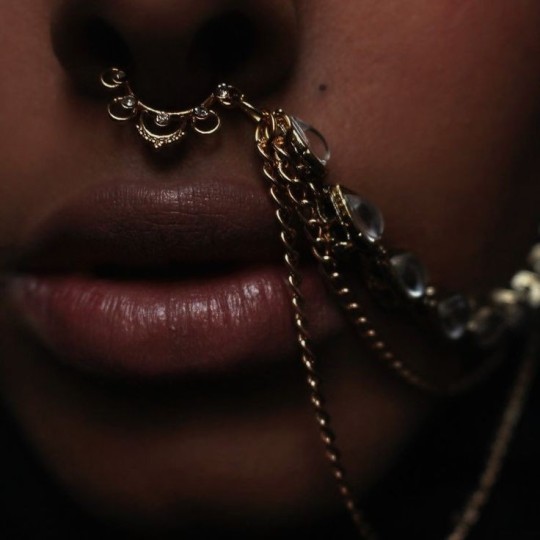
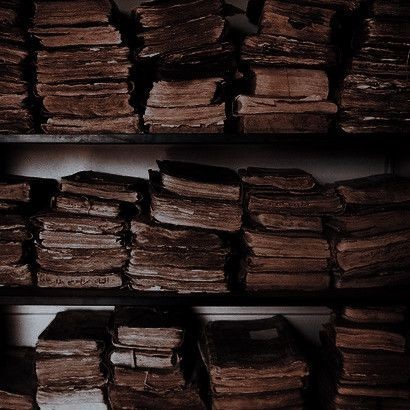

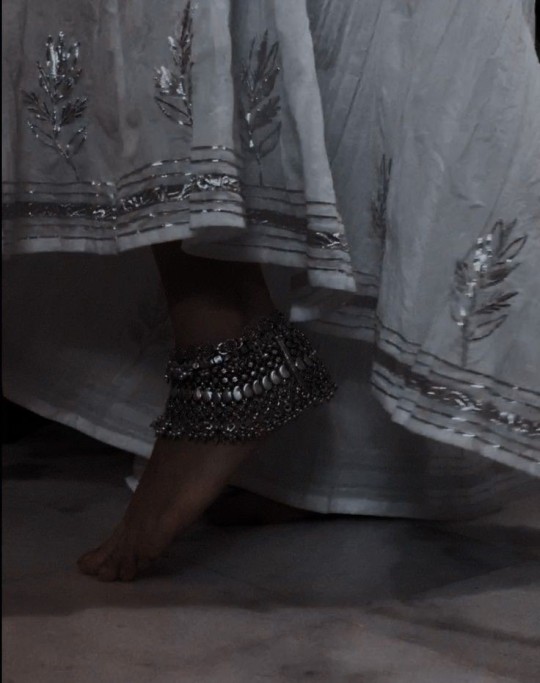
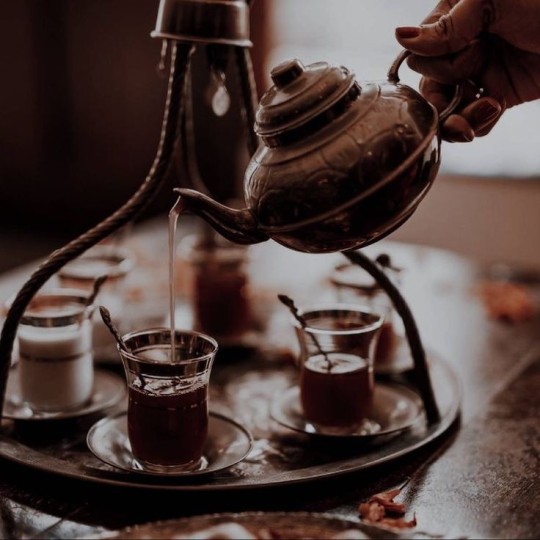
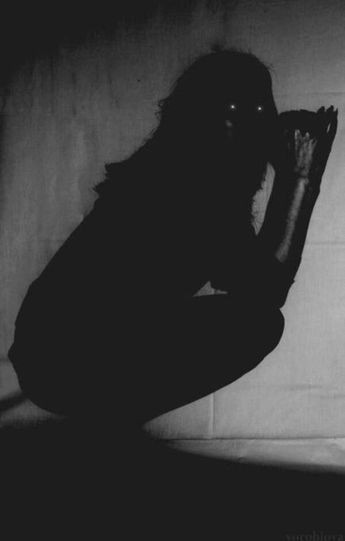

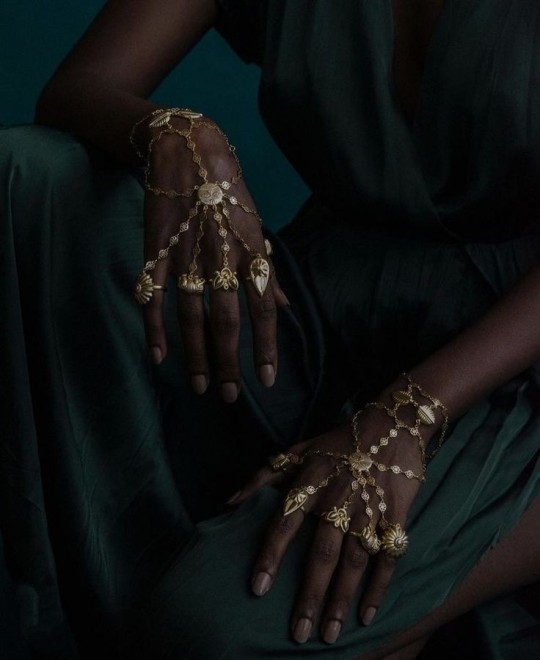

।। Aloukik।।
~ A folklore event ~
To all who are interested,
I'm hosting an event focusing on Indian folktales, fairytales, mythos and legend.
Aloukik is a month long event dedicated to highlighting stories from different cultures of India. There will be 10 prompts. It will run from 25th June to 24th July, with 3 days dedicated to each prompt.
Folklore has been an integral part of many cultures worldwide and India is no different. In our kaleidoscopic country, there exists a myriad of stories in different cultures, passed down from generation to generation. Storytelling has always been a fundamental part of human existence, stories become living, breathing things, transcending time and space as long there's someone to tell them.
So I'm inviting you to share your stories and your culture, folklore from any region, any state, any religion, any culture is welcome.
•To participate, you can post your writings, art, GIFs, Edits, Moodboards, anything you want.
•New content is appreciated but old content is also welcome.
•You can participate as much or as little as you'd like. You can post multiple entries for a given prompt or none at all.
•Late submissions are also welcome.
•Hateful content is not allowed. I have the right to ignore any content I see as hateful, but I will excercise this carefully. Furthermore, I will block you if it becomes a repeated offence throughout the event.
Be respectful of each other's cultures and religions.
To submit your entry, please follow the format given below:
@kathaniii | Aloukik 2023 | Day X
Please also use the event hashtag #Aloukik 2023.
The prompts are:
Day 1: (25th-27th June) Stories from your culture
Focus on and highlight stories from your state, religion or culture.
Day 2: (28th-30th June) Horror
Horror is a recurring theme in folklore. Horror stories are often the cornerstone of folktales. Highlight your favourite bhootnis, spirits, demons, and witches alike.
Day 3: (1st-3rd July) Women in Folklore
From witches to fairies, women have always played an integral role in many folktales and fairytales. Celebrate the inspiring women in folklore, their stories and their role in folk culture.
Day 4: (4th-6th July) Your Favourite Fairytales
Fairytales are, for most people, an important part of their childhood. Post about your favourite Princes and princesses, fairies and demons, kingdoms and magic.
Day 5: (7th-9th July) Unsung Stories
Post about folktales that you think are underrated and unsung. Tales that not many people know about, tales that you think deserve more love.
Day 6: (10th-12th July) Heroes and Heroines
Post about your favourite heroic characters, your favourite heroes and heroines, your favourite knights in shining armour.
Day 7: (13th-15th July) Villains
We all love a good villain and folktales have given us many iconic villains and antagonists. Post about your favourite evil queens, evil kings, dark witches and demon kings.
Day 8: (16th-18th July) Your favourite characters
Post about your favourite characters from fairytales and folktales. Tell us about any characters you fell in love with, hero or villain.
Day 9: (19th-21st July) Childhood stories
We all grew up hearing fairytales and folktales from our parents or grandparents. Tell us about your favourite childhood stories, stories you grew up with, stories you cherish.
Day 10: (22nd-24th July) Creator's Choice
This day is a free-for-all. Post about anything you want, any stories, any characters, anything your heart desires.
Feel free send any questions about the event to the event's blog @kathaniii. Thank you.
#Aloukik 2023#desiblr#desi academia#mythology#folklore#folktales#fairytales#desi tag#event#desi aesthetic#desi dark academia#desi moodboard
113 notes
·
View notes
Text
We don't talk much about the time Dionysus came to India to convert the natives and introduce them to wine under the orders of his dad and Hera consequently going KillDio mode and wreaking chaos in the entirety of Olympus as well as the East.
#greek mythology#dionysiaca#dionysus#dionysus deity#greek gods#greek myths#zeus#hera#ancient greek mythology#desiblr#aloukik 2023
34 notes
·
View notes
Text
The Mahavidya (Sanskrit: महाविद्या, IAST: Mahāvidyā, lit. Great Wisdoms) are a group of ten Hindu[1] Tantric goddesses.[2] The 10 Mahavidyas are usually named in the following sequence: Kali, Tara, Tripura Sundari, Bhuvaneshvari, Bhairavi , Chhinnamasta, Dhumavati, Bagalamukhi, Matangi and Kamala.[3] Nevertheless, the formation of this group encompass divergent and varied religious traditions that include yogini worship, Saivism, Vaishnavism, and Vajrayana Buddhism.[4]
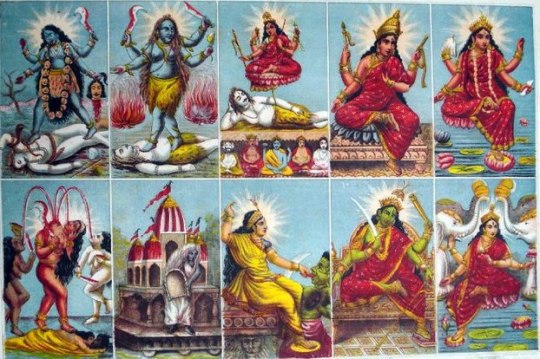
Shaktas believe, "the one Truth is sensed in ten different facets; the Divine Mother is adored and approached as ten cosmic personalities," the Dasa-Mahavidya ("ten-Mahavidyas").[6] As per another school of thought in Shaktism Mahavidyas are considered to be form of Mahakali. The Mahavidyas are considered Tantric in nature, and are usually identified as:[7
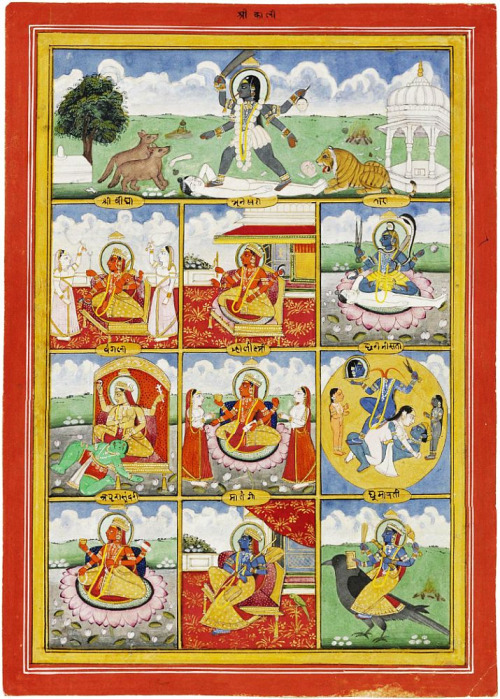
1. Kali: The goddess who is the ultimate form of Brahman, and the devourer of time (Supreme Deity of Kalikula systems). Mahakali is of a pitch black complexion, darker than the dark of the dead of the night. She has three eyes, representing the past, present and future. She has shining white, fang-like teeth, a gaping mouth, and her red, bloody tongue hanging from there. She has unbound, disheveled hairs. She wears tiger skins as her garments, a garland of skulls and a garland of rosy red flowers around her neck, and on her belt, she was adorned with skeletal bones, skeletal hands as well as severed arms and hands as her ornamentation. She has four hands, two of them had the trident called the trishula and the sword and two others carried a demon head and a bowl collecting the blood dripping from a demon head.
2. Tara: The goddess who acts as a guide and a protector, and she who offers the ultimate knowledge that grants salvation. She is the goddess of all sources of energy. The energy of the sun is believed to originate from her. She manifested as the mother of Shiva after the incident of Samudra Manthana to heal him as her child. Tara is of a light blue complexion. She has disheveled hair, wearing a crown decorated with the digit of the half-moon. She has three eyes, a snake coiled comfortably around her throat, wearing the skins of tigers, and a garland of skulls. She is also seen wearing a belt supporting her skirt made of tiger-skin. Her four hands carry a lotus, scimitar, demon head and scissors. Her left foot rests on the laying down Shiva.
3. Tripura Sundari (Shodashi, Lalita): The goddess who is "beauty of the three worlds" (Supreme Deity of Srikula systems); the "Tantric Parvati" or the "Moksha Mukta". She is the ruler of Manidvipa, the eternal supreme abode of the goddess. Shodashi is seen with a molten gold complexion, three placid eyes, a calm mien, wearing red and pink vestments, adorned with ornaments on her divine limbs and four hands, each holding a goad, lotus, a bow, and arrow. She is seated on a throne.
4. Bhuvaneshvari: The goddess as the world mother, or whose body comprises all the fourteen lokas of the cosmos. Bhuvaneshvari is of a fair, golden complexion, with three content eyes as well as a calm mien. She wears red and yellow garments, decorated with ornaments on her limbs and has four hands. Two of her four hands hold a goad and noose while her other two hands are open. She is seated on a divine, celestial throne.
5. Bhairavi: The fierce goddess. The female version of Bhairava. Bhairavi is of a fiery, volcanic red complexion, with three furious eyes, and disheveled hair. Her hair is matted, tied up in a bun, decorated by a crescent moon as well as adorning two horns, one sticking out from each side. She has two protruding tusks from the ends of her bloody mouth. She wears red and blue garments and is adorned with a garland of skulls around her neck. She also wears a belt decorated with severed hands and bones attached to it. She is also decked with snakes and serpents too as her ornamentation – rarely is she seen wearing any jewelry on her limbs. Of her four hands, two are open and two hold a rosary and book.
6. Chhinnamasta: The self-decapitated goddess. She chopped her own head off in order to satisfy Jaya and Vijaya (metaphors of rajas and tamas - part of the trigunas). Chinnamasta has a red complexion, embodied with a frightful appearance. She has disheveled hair. She has four hands, two of which hold a sword and another hand holding her own severed head; three blazing eyes with a frightful mien, wearing a crown. Two of her other hands hold a lasso and drinking bowl. She is a partially clothed lady, adorned with ornaments on her limbs and wearing a garland of skulls on her body. She is mounted upon the back of a copulating couple.
7. Dhumavati: The widow goddess. Dhumavati is of a smoky dark brown complexion, her skin is wrinkled, her mouth is dry, some of her teeth have fallen out, her long disheveled hair is gray, her eyes are seen as bloodshot and she has a frightening mien, which is seen as a combined source of anger, misery, fear, exhaustion, restlessness, constant hunger and thirst. She wears white clothes, donned in the attire of a widow. She is sitting in a horseless chariot as her vehicle of transportation and on top of the chariot, there is an emblem of a crow as well as a banner. She has two trembling hands, her one hand bestows boons and/or knowledge and the other holds a winnowing basket.
8. Bagalamukhi: The goddess who paralyzes enemies. Bagalamukhi has a molten gold complexion with three bright eyes, lush black hair and a benign mien. She is seen wearing yellow garments and apparel. She is decked with yellow ornaments on her limbs. Her two hands hold a mace or club and holds demon Madanasura by the tongue to keep him at bay. She is shown seated on either a throne or on the back of a crane.
9. Matangi: The Prime Minister of Lalita (in Srikula systems), sometimes called the "Tantric Saraswati". Matangi is depicted as emerald green in complexion, with lush, disheveled black hair, three placid eyes and a calm look on her face. She is seen wearing red garments and apparel, bedecked with various ornaments all over her delicate limbs. She is seated on a royal throne and she has four hands, three of which hold a sword or scimitar, a skull and a veena (a musical instrument). Her one hand bestows boons to her devotees.
10. Kamalatmika (Kamala): The lotus goddess; sometimes called the "Tantric Lakshmi". Kamala is of a molten gold complexion with lush black hair, three bright, placid eyes, and a benevolent expression. She is seen wearing red and pink garments and apparel and bedecked with various ornaments and lotuses all over her limbs. She is seated on a fully bloomed lotus, while with her four hands, two hold lotuses while two grant her devotees' wishes and assures protection from fear.
All these Mahavidyas reside in Manidvipa.
The Mahabhagavata Purana and Brihaddharma Purana however, list Shodashi (Sodasi) as Tripura Sundari, which is simply another name for the same goddess.[9] The Guhyati guyha-tantra associates the Mahavidyas with the Dashavatara, the ten avatars of Vishnu, and states that the Mahavidyas are the source from which the avatars of Vishnu arise.
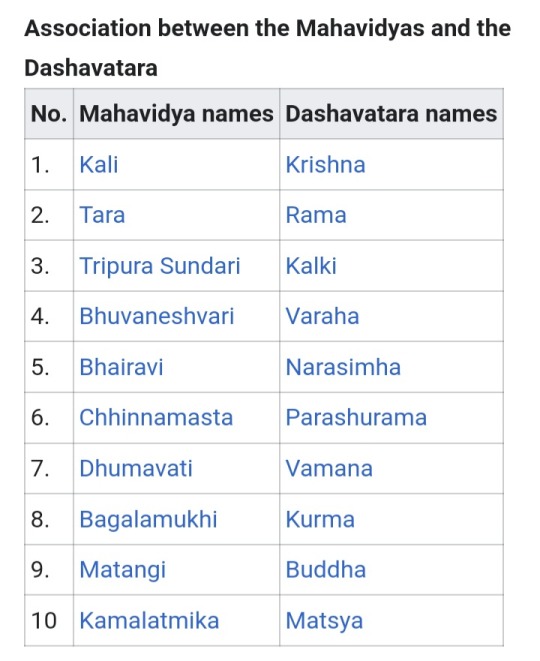
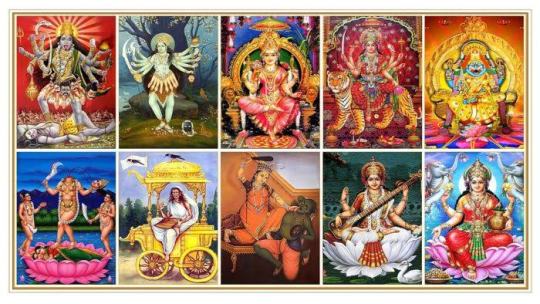

#desi aesthetic#desi tag#desiblr#desi#desi dark academia#desi culture#desi academia#desi stuff#hindu mythology#south asian aesthetic#south asian dark academia#aloukik 2023
41 notes
·
View notes
Text
Kalingattuparani
A parani is particular kind of Tamil literary composition which eulogises a warrior who has killed a thousand male elephants on the battle - field. A curious thing about this genre is that it is named after the vanquished foe.
Kalingattuparani is the most famous of all paranis. Composed by Jayamkondar, the poet laureate of Kulottunga Chola, it depicts the Chola invasion of Kalinga. It celebrates the triumph of Karunakara Tondaiman, the lord of Vandaiyar, a general of Kulottunga. Karunakara Tondaiman defeated the Kalinga king Anantavarman and planted a pillar of victory in Kalinga. However, we should remember that these are literary works produced under the patronage of rulers to appease them.
I would like to present a short extract from this great work used in the 2010 film Raavanan:
youtube
Let us begin the war Let us begin the war Soldiers on both camps shouted War cries reverberated like the roar of the ocean! Charge the cavalry here! Send the elephant division there! These war cries went on increasing!
They stringed their strong bows Rending all the directions by their noise! In the battle-field War cries struck the world dumb!
Both the armies dashed against each other Like the confrontation of two oceans; The charging of the cavalries Like the confrontation of foaming waves!
Warring elephants dashed against each other Like the clash of the mountains! Chariots charged against each other Like the clash of the clouds!
This is from Tamil Nadu
@kathaniii
#aloukik 2023#raavanan#raavan#ar rahman#mani ratnam#Vikram#chiyaan vikram#aishwarya rai bachchan#kollywood#Youtube#tamil#tamilculture
29 notes
·
View notes
Text
First day of the #Aloukik event.
I'm from Assam, India so I'll be sharing some folktales and lores from my state.
But today I just wanna tell y'all the story of how we got the name of our state. Not the name Assam, but its original names- Kamarupa and Pragjyotishpura, the names that our state was referred to as in the epics of our country.
As for the first name, Kamarupa, this is what happened according to the scriptures-
The mythology regarding the origin of the name Kamarupa tells us the story of Sati who died due to the discourtesy shown to her husband by her father Daksha. Overcame by grief, Shiva carried her dead body and wandered throughout the world. In order to put a stop to this, Vishnu used his discus to cut the body into pieces, which then fell into different places. One such piece fell down on Nilachal hills near Gauhati and the place was henceforth held sacred as Kamakhya. But Shiva’s penance did not stop, so the Gods sent Kamdev, the cupid to break his penance by making him fall in love. Kamdev succeeded in his mission, but Siva enraged at this result, burnt Kamdev to ashes. Kamdev eventually regained his original form here and from then onward the country came to be known as Kamarupa (Where Kama regained his Rupa or form).
In case of the second name, Pragjyotishpura, this was the case.
Bhagadatta was the son of Narakasura, and he named his city Pragjyotishpura, where 'prag' means 'eastern', 'jyotish' means 'star' or 'astrology' and 'pura' means 'city'. So the meaning behind the name of this kingdom was the City of Eastern Star or City of Eastern Astrology.
In case of the modern name, Assam, formerly called Axom or Asom, the sources of its origin are vague so I'm not gonna talk about it.
Welp that's it for the first day I guess. A goof introductory history rant on how my state got its ancient names.
@kathaniii
27 notes
·
View notes
Text
In case you're Assamese or Irish, you will NOT romanticize about fairies, or the faefolk in general. Why?
Pori | পৰী

They are supernatural beings that exist in two distinct genders - male and female. These creatures are believed to reside in bodies of water such as lakes, ponds, and rivers. According to legend, female pori have the ability to possess males while male pori possess females.
The effects of possession by a pori are said to be severe, with the afflicted person often exhibiting erratic, maniacal behavior. It is thought that pori possess humans in order to experience the physical world and satisfy their own desires.
In order to rid oneself of a pori possession, there are specific chants and rituals that can be performed. These chants are believed to have the power to banish the pori from the body, freeing the person from their influence.
The concept of pori and their possession of humans is deeply rooted in folklore and mythology in certain cultures. While these beliefs may not be scientifically verifiable, they continue to hold a significant place in the cultural imagination of those who believe in them.
And in case of Irish mythology, yall know about Changelings and Sidhe already now don't you?
@kathaniii
#aloukik 2023#mythology memes#assamese mythology#assamese folklore#irish mythology#changeling#mythology#folklore#irish folklore#celtic mythology#celtic folklore#sidhe#pori
20 notes
·
View notes
Text
The Harbour of Truth
In the port of Muscat, two sons were born to a rich merchant. As they grew up, their enemity too grew with them. He summoned the eldest of them and blessed him, "If you quarrel like this, one will murder the other. Therefore, you should not remain in the land of your father and forefathers. Go forth to the Harbour of Truth and prosper".
Therefore, the son was sent off with enough goods and ten special "containers of treasure". He traveled to many lands, met the chieftains, kings and emperors, and requested some of them to safekeep a 'treasure' till he returns. The treasure was a container of gold covered with a layer of pickle. But when he returned, all he got were containers filled with pickle.
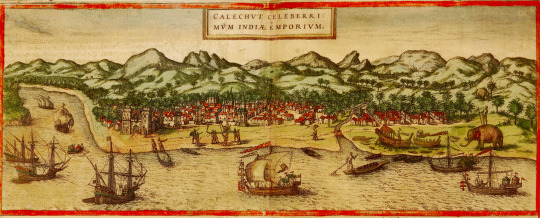
Finally, he reached Kozhikode, made the same request to the Zamorin (King of Kozhikode) and went to Lanka. When he returned, his container was returned to him. He noticed that the container hasn't gotten lighter nor the seal was broken. He realised that he finally discovered the Harbour of Truth.
He opened the container, presented the gold to the Zamorin and requested permission to settle down in Kozhikode. Thus, were established the Koyas of Kozhikode.
********
The name "Koya" comes from the Persian honourific "Khawaja" meaning "Master/Teacher". The chief of them was Shah Bandhar Koya, the Commissioner of the Kozhikode Port. He supervised customs on the behalf of the Zamorin, fixed the prices of the good, and collected the tax to the treasury. After Zamorin conquered Valluvakonathiri (King of Valluvanadu) and attained the Rakshapurusha Sthanam (the office of the Great Protector) of Mamankam, Shah Bandhar Koya was given the right to stand on the left side of the Zamorin during Mamankam.
I am from Kerala.
@kathaniii
13 notes
·
View notes
Text
Day 2 of Aloukik event.
Horror
Let's talk about some of the mythical creatures of Assamese folklore, shall we?
Baak | বাঁক
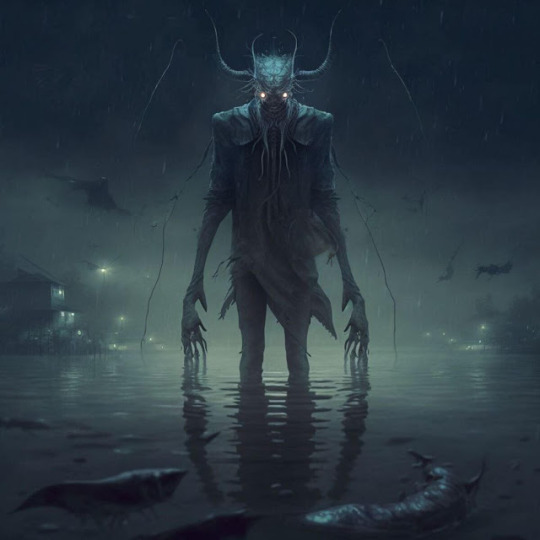
The baak is a creature that appears frequently in folktales across Assam. It is typically found near water bodies and is known to be malevolent, often causing trouble for fishermen and other locals. The baak has a particular fondness for fish and can be dangerous, sometimes even drowning its victims.
According to folklore, the baak has a pouch attached to it that contains its soul. Destroying this pouch is the only way to kill a baak. Additionally, the baak is said to assume the form of its victim after death or possess them, sometimes going on to live with the victim's family and attempting to harm them as well.
To avoid encountering a baak, carrying a torn fishing net is said to be effective, as baaks are believed to be afraid of it. In some stories, the baak assumes the form of a man to live with his wife.
In "Assamese Demonology," Benudhar Rajkhowa classifies Assamese spirits into sub-terrananian, terrestrial, aerial, and celestial categories, placing the baak among the terrestrial spirits. Within this category, the baak is classified as an aqueous spirit and is listed as the first of five major aqueous spirits.
Dót | দ'ত
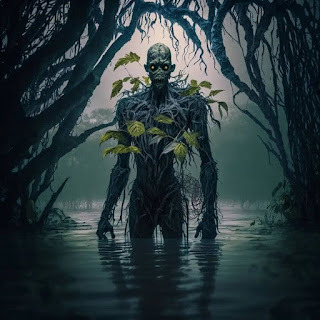
The dót, a spirit derived from the Sanskrit word daitya meaning demon, is well-known among the Assamese people. He lures individuals to secluded areas, where he inflicts severe beatings on them. However, he rarely kills his victims. Sometimes, he takes the form of a friend and convinces his target to accompany him to the watercourse where he has placed his fishing trap, only to leave them to suffer his wrath. The dót is a slender, tall figure with long, spike-like fingers. He resides in water channels, tanks, and overgrown watery plants , remote places. His appearance is jet black and he is naked, except for his prominently exposed fingers. The spirit is covered in a glutinous substance, giving him an advantage in wrestling matches with his victims. Mustard grain is the only thing that terrifies the dót. This is why it plays a crucial role in exorcism ceremonies. The dót initially appears as a regular person, but gradually grows taller until he vanishes entirely. At this point, the victim is so terrified that the spirit can possess them. The dót beats his victim mercilessly when he is alone but refrains from harming them in front of his wife. The spirit is powerless against righteous people. His spectral bag is his talisman, which gives him superhuman powers. If it is snatched from him, the dót loses his abilities and becomes a bound servant to the person who took it. He is forced to work as a regular human being until he can retrieve his bag. Children wear fishing hooks around their necks to scare off the dót.
Unoish-hotiya | ঊনৈশহতীয়া
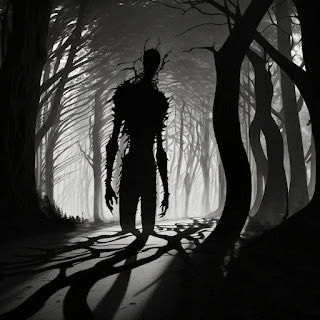
It is a ghost that originates from an earlier time when people used unconventional methods of measurement, such as using their hands and fingers. The name of this ghost is derived from its towering height, which is said to be around 19 hands tall when they are put together. This ghost is typically described as a black shadow that appears during prime afternoon hours. It is believed that if someone happens to walk under the shadow of Unoish-hotiya, they and their family will be plagued with turmoil and misfortune.
Many people in Assam still fear the wrath of Unoish-hotiya and take precautions to avoid walking under its shadow. There are also several stories and legends associated with this ghost that have been passed down from generation to generation. The fear of encountering Unoish-hotiya serves as a warning to people to be cautious and respectful of the unknown. Despite the lack of scientific evidence to support the existence of such supernatural beings, the belief in Unoish-hotiya continues to be deeply ingrained in the cultural consciousness of certain communities.
পিশাচ | Pixaas
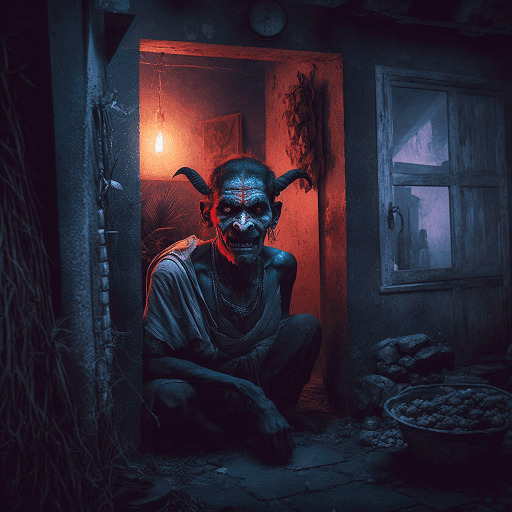
Pixaas is a bloodthirsty demon. It is a common motif in many mythologies and religions. A Pixaas, in many belief systems, is an evil spirit or supernatural entity that is often associated with chaos, destruction, and malevolence. The idea of a Pixaas refers to a demon that is said to crave or require blood for sustenance or as part of its destructive nature.
In some cultures, pixaas is believed to be supernatural entities that possess humans and cause them to commit heinous acts, including murder and mutilation. Some pixaas are also believed to feed on the blood or life force of living beings, often causing illness or death in their victims. The female counterpart of this creature is called Pixaasini, who are pretty similar to their male counterparts.
Kon bhoot

It is a 3 legged creature with no neck and an eye on his chest. This is regarded to be the king of the ghosts.
This is believed to have looked really scary and harmful in nature. This has the strength of mauling several human beings at the same time.
There are a lot more these are just a very few examples.
AI by Chinmoy Barma
@kathaniii
16 notes
·
View notes
Text
The Most Heartening Friends' Meet-up Ever
Kuchela alsoknown as Sudama is a childhood friend of Krishna. They were classmates at Sandipani Maharshi's ashramam. But upon reaching adulthood, Krishna became the ruler of Dvaraka, and Sudama remained an impoverished villager. His wife implored him to meet his old friend and request for some financial assistance.
He sets out to Dwaraka with a bundle of rice flakes. Krishna and Rukmini welcome him with so much love and treat him royally, which embarassed him. He doesn't mention anything about his situation or the gift of rice flakes. The poem mentioned in the post deals with their casual conversation.
But all knowing Krishna asks for rice flakes and Rukmini stops him from eating too much. Kuchelan returns to his home after some time, without asking for anything. But he is amazed when he reaches his village for his home have been conveyed to a palace with a lot of riches. He and his wife enjoy their newly found wealth and status with humility.
This Kathakali performance based on the story of Krishna and Kuchela is called "Kuchelavritham"
youtube
A shorter modern version (starts from 'Medura Bhakti Ulla')
youtube
Ajitha Hare Jaya Madhava Vishnu!
Unconquerable one! Hari! Jaya! Madhava! Vishnu!
Ajamukhadeva Nata!
He who is worshiped by other gods like Brahma
Vijaya Sarathe Sadhu Dwijan Onnu Parayunnu
Charioteer of Arjuna, this poor Brahmin is telling you
Sujana Sangamam Ettam Sukrithanivaha Sulabhamathanu Niyatham
Association with noble people is indeed meritorious and rare
Paladinamayi Njanum Balabhadranuja! Ninne
Nalamodu Kanmathinu Kaliyalle Ruchikkunnu.
Brother of Balarama, I have been yearning to visit you since a long time. I am not joking.
Kaalavishamam Kondu Kamam Sadichathilla
I was unable to fulfill my desire (to come and meet you) due to difficulties and obstacles
Neela Neeradavarna! Mridula Kamalaruchiranayana!Nrihare!
The one with the color of blue clouds! The one with eyes like soft lotus petals! The one had took the form of a lion!
Adyapi Bhawal Kripa Vidyothanamakum Padyati Elkkuvathinu Bhagyam Undakuka Moolam
Now, since I am fortunate be enlightened by the earthen dust your grace,
Chaidyare! Janmaphalamee Dwijanenthu Venam?
Enemy of Chedi King, Sishupalan. What gift can this Brahmin desire more?
Hridhyam Tavaka Vrittam Mozhikilula Uraga Patium Adhuna
Your news is dearest to my heart. If those news are told, even Anantha will be swayed.
Medurabhaktiyulla Madrisham Sukhamanye
For the most devoted ones like me, there can be no other feeling than pleasure.
Vadamillaho Dukham Badhikkayilla Noonam
There is no arguing about it (no doubt). We won't be affected by sorrow
Yadavadhipia Ninne! Hridi Chinta Nidanena,
The leader of the Yadavas! If I perpetually think of you in my mind, Modam me Valarunnu! Karuna Varanamarunasahaja Ketana!
My Happiness increases! Please have mercy, the one who has Aruna's brother (Garuda) the insignia!
I am from Kerala.
@kathaniii
18 notes
·
View notes
Text
The Wrath of a Goddess
Years ago, a stranger arrived at a small hamlet. He informed the villagers that he sensed a presence of the goddess in the village pond. The gullible villagers searched in the pond and found an idol. Their joy knew no bounds. They praised the stranger for his foresight and divinity. They requested him to stay there and do poojas, for it was he who sensed the grace of the goddess. Reluctantly, he agreed.
What they didn't know was that he was a charlatan. It was he himself who immersed a statue in the pond. He had big plans. At first, he would impress the villagers. Then the friends and family of these people from neighbouring villages will come there. At least some people's problems will be solved naturally. Other fools will console themselves that it is their fate and do more offerings to ease their sufferings.
His plans worked. Poor people's cries and prayers filled the atmosphere. Donations poured in. What started as a small shrine became a temple. The charlatan became a 'saint', a godman whom the people he cheated and abused were scared to point fingers at. The charlatan should have been happy but he always felt uneasy. He never felt any guilt but it was as if someone is watching him. Who is watching him this intently? Aren't the politicians his friends? Doesn't he bribe the police officers regularly? No, it is nothing. It is time to conduct the closing prayers of the temple.
He entered the sanctum sanctorum and did the daily drill. His lack of knowledge or devotion never bothered him. The villagers are too ignorant to recognise it. And the goddess. It is a statue he immersed and recovered from water. Isn't it? He gazed at the face of the idol. Does this look different today? It must be an illusion of the light. Is he feeling cold? Maybe he is getting a fever. Is the earth shaking? What's this big blinding light? Is that a scream? Yes, but it sounds like the jingling of bells. Seriously? He can hold his liquor better than this!
On the next day, the villagers found the 'saint' lying dead under the feet of the goddess who was covered in blood.

Kalamezhuthu, a ritual art form of Kerala wherein the deity's form is drawn on the floor using coloured powders.
I am from Kerala
This is the summary of a poem I read at least 15 years back. I don't remember anything about the title or author of the poem. So, forgive me for my inability to give due credits.
9 notes
·
View notes
Text
Today we start Day 2, Horror. It's lowkey the prompt I'm most excited for. Can't wait to see what you come up with.

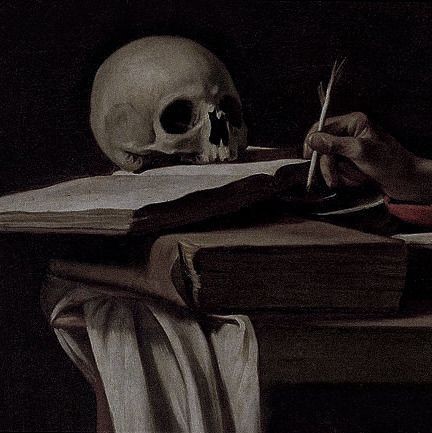
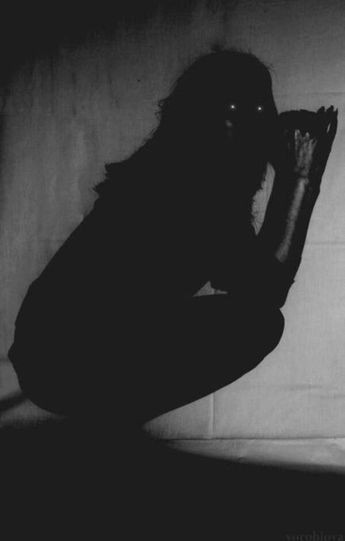
3 notes
·
View notes
Text
Day 3 of aloukik, Women in folklore is ongoing! Can't wait to read your stories
0 notes